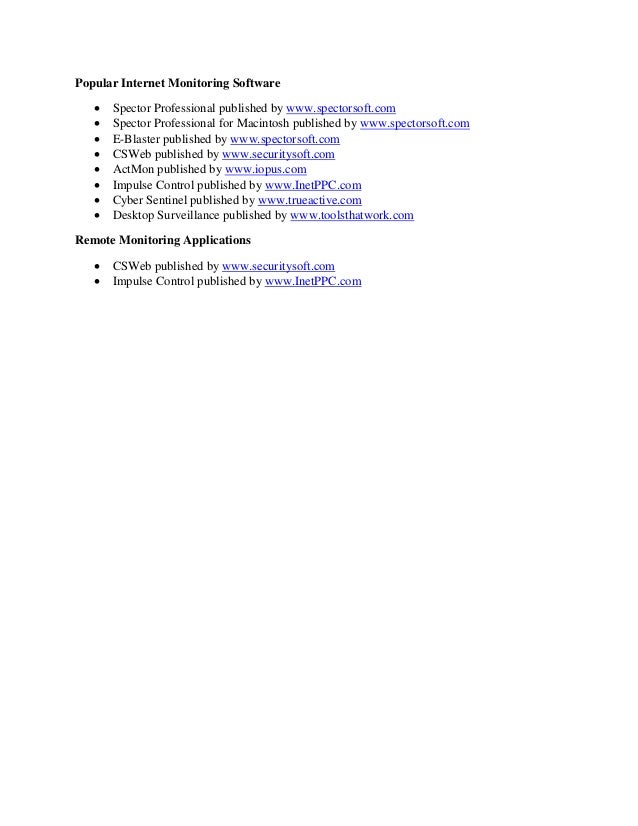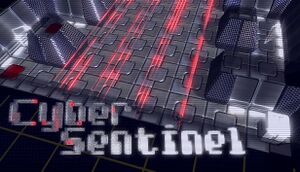CyberSentinel Mac OS
- The first thing a user can do to reduce her risk of cyber attacks, regardless of the operating system, is to install an Internet Security software suite, such as Norton Security (for both Mac and PC) on the machine. Even Macs can use the added protection these days.
- Kids Gogogo Kids Gogogo (KGGG) is een Japans product, verkrijgbaar voor Mac OS 9 en OS X. De installatie verloopt redelijk eenvoudig, maar daarna moet u zelf op zoek naar het instellingenscherm. Het programma is naast webfilter ook spyware-checker en biedt tijdcontrole en applicatie-controle.
- Description: SelfControl is an open source project, the purpose of which is to allow the user to block access to websites (or mail servers) for a predetermined period of time.
- R-Wipe & Clean 是一種完整的擦除無用檔案、保護您電腦隱私的解決方案。它能徹底刪除您線上和脫機活動的隱私記錄(例如 internet 暫存檔案、歷史記錄、cookie、自動完成的表格和密碼、交換檔案、最近開啟的文件清單、Explorer MRU、暫存檔案等等),追溯 200 多個協力廠商應用程式,並釋放您的磁碟空間。.
I’m not one for using fear tactics, but generally people start to get nervous when talking about backing up their digital files. Why is that? I think it’s because, even though we live in the digital age, no one feels completely comfortable with digital data. When you have a stack of paper or a ledger, you know exactly where it is and whether it is safe. Even if you file it away, it takes up physical space in a filing cabinet, and you can go right back and pull it out if you want. If you have locked, fireproof cabinets, you feel safe because they are protected in case of disaster or break-in. Maybe you even keep copies somewhere else, like a corporate office. That was the old backup system.
Our computers may emulate the look of paper. But honestly, where does all your work go when you close the program and shut your computer off? It’s all there, but it’s not. Sure, you “save” it, but is it really safe? If your computer just decided never to turn on again, or smoke started pouring out, would you know how to retrieve your files? Does the very thought make your break out in a cold sweat?
We all know we should “save early and often.” So what about backing up our files? We don’t even know where all our files are physically, how are we supposed to know how to back them up? And where is the safest place to store our backup files? You could get an external USB drive, which will save you if your computer goes up in smoke, but not if your house or office burns down or gets broken into. You could save it to the Dropbox or Google Drive, but that can get expensive… and let’s face it, not everyone’s comfortable with online storage. (The expression “where in the world is that document?” can now be taken literally).

Internet Security Barrier X6 for Mac and Windows. Intel C Compiler Professional Edition for Mac OS. X.
Ok, so once we find our files, how do we protect them? Here are some good principles to follow for a solid backup plan:
- Keep at least a daily local backup on a USB or network drive for easy access. Use a program like SyncBack for Windows or Time Machine for the Mac. (I don’t recommend using Windows Backup or most programs that come pre-loaded on consumer-grade external backup drives).
- Keep at least a weekly off-site backup for bigger disasters. Here, you can use cloud storage, if you are comfortable with it, or you can rotate backup drives to another location on weekends.
- For extra piece-of-mind, keep continuous versioning file backups (for the occasional “oops, I deleted it!”) as well incremental system backups (for quickly recovering from computer crashes).
If you are saving sensitive data, you can add encryption using BitLocker (Windows) or TrueCrypt (Mac/Linux). This is also a safeguard to consider if you want to use cloud storage, but just not sure about who’s going to have access to it.
Cybersentinel Mac Os X

Cybersentinel Mac Os Catalina
My personal favorite for a comprehensive backup plan is CRASHPLAN™ by Code42 (www.crashplan.com). Their software is free and easy to set up using local storage. Even if you opt for cloud storage, their prices are pretty reasonable – and they use 448-bit local encryption by default, so none of your data is visible to anyone except you.
So there y’go. Now you have not excuse to keep procrastinating your backup plan. And, if you just don’t have the time or inclination to deal with it, you can always call your friendly, local tech guy.
Cybersentinel Mac Os Download
I'm the guy with answers to all your tech questions.